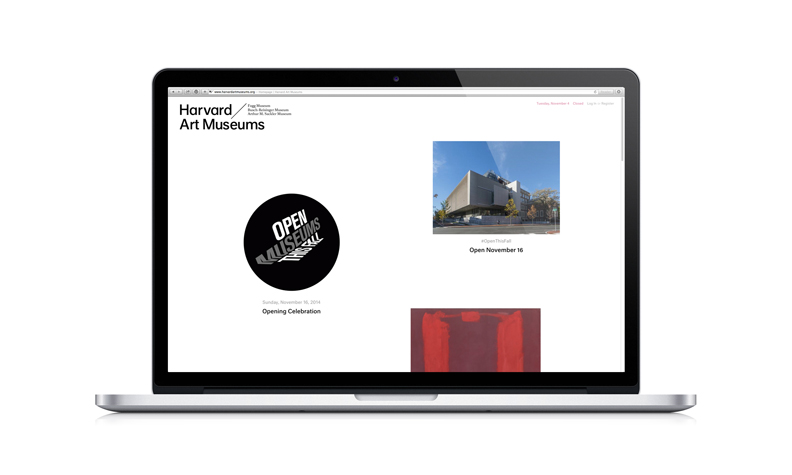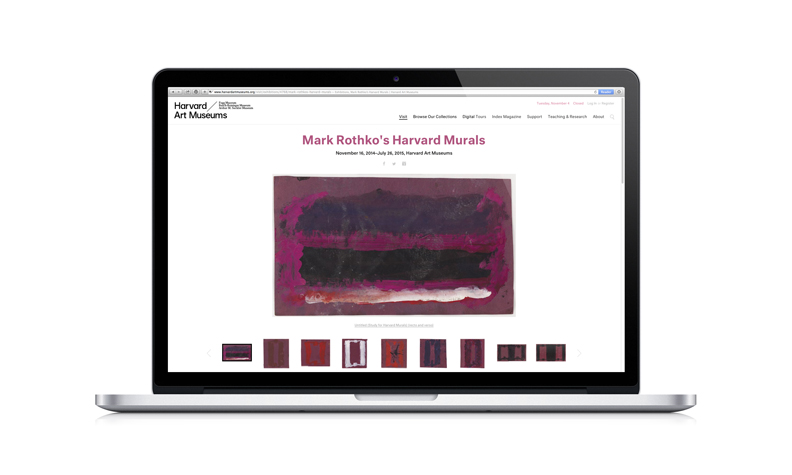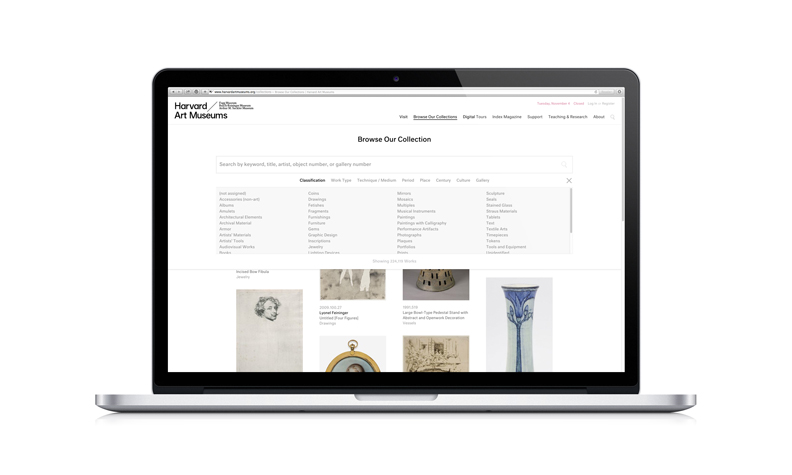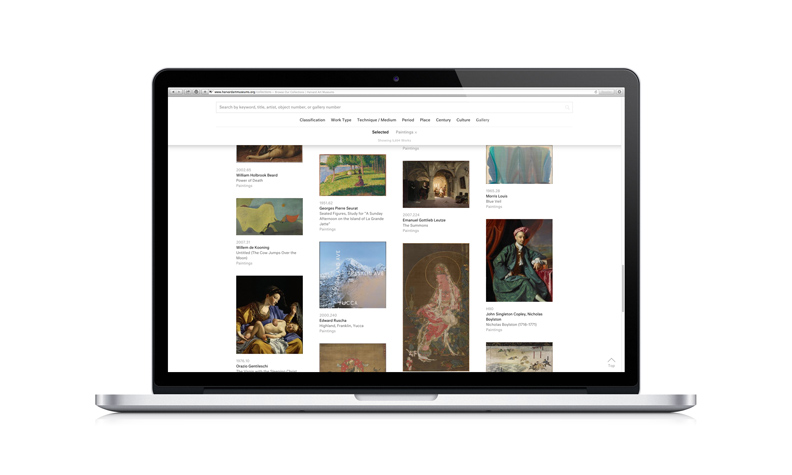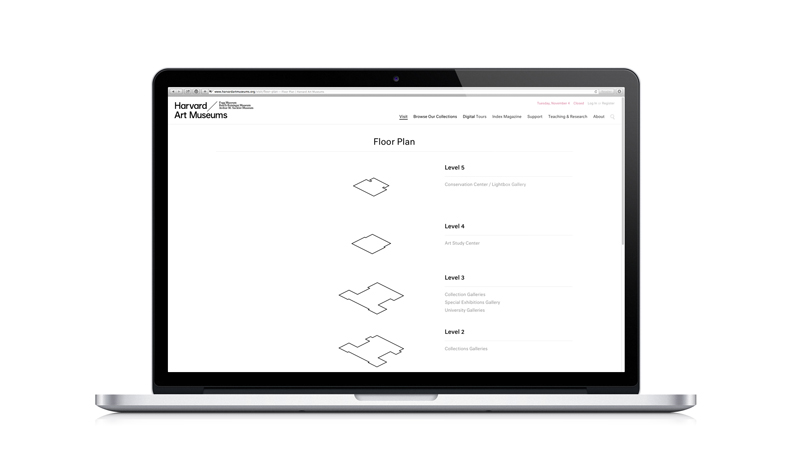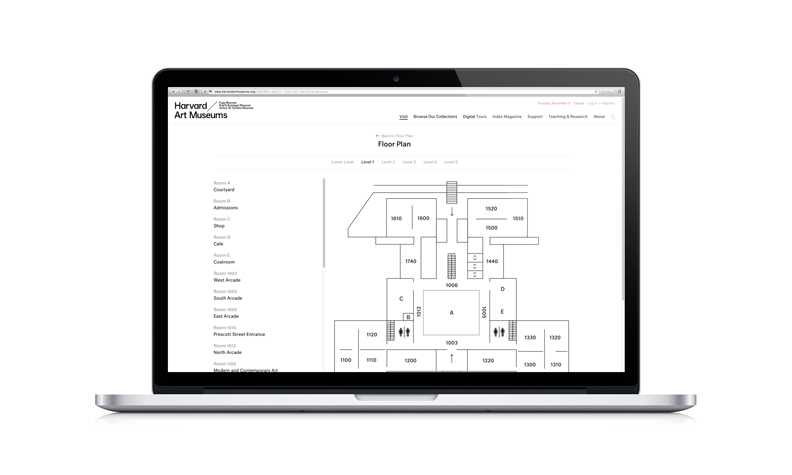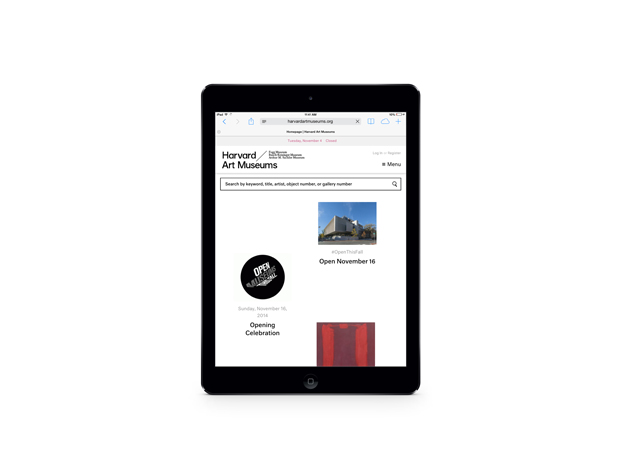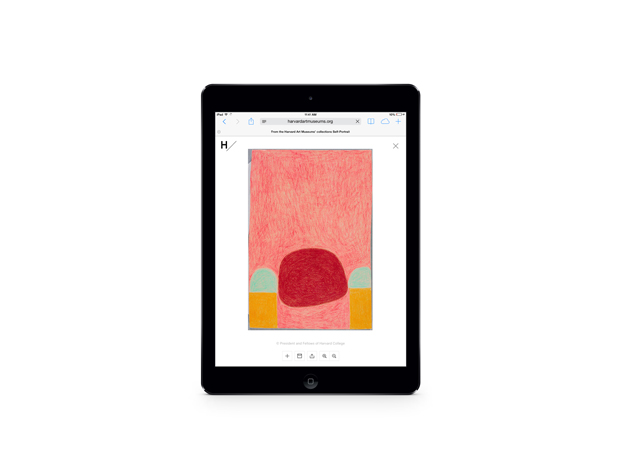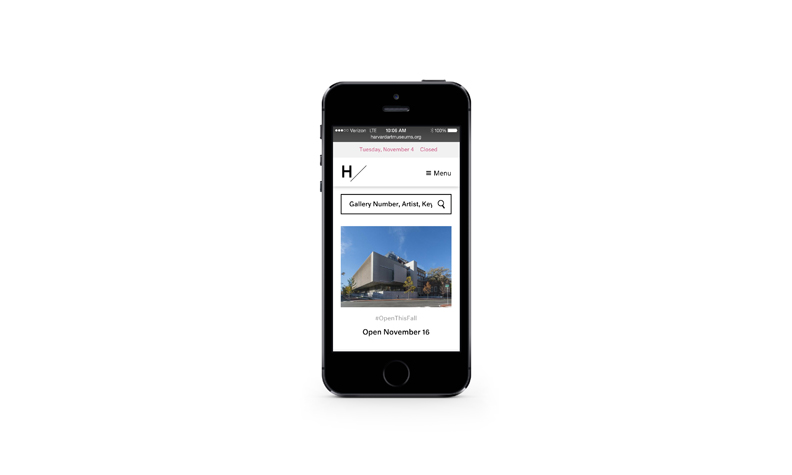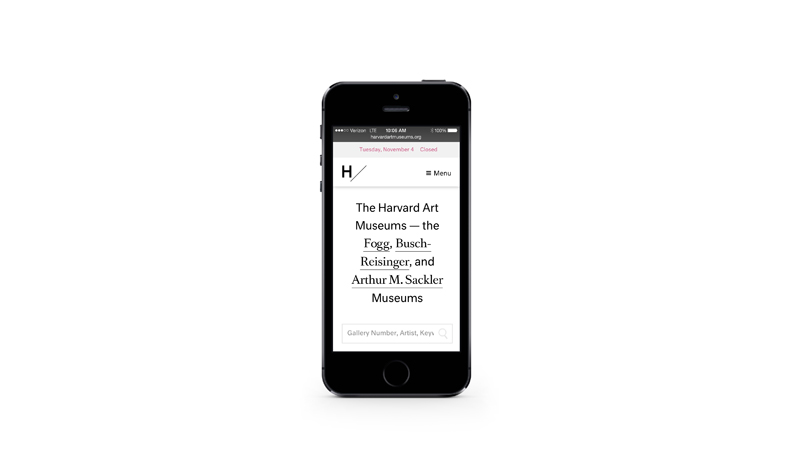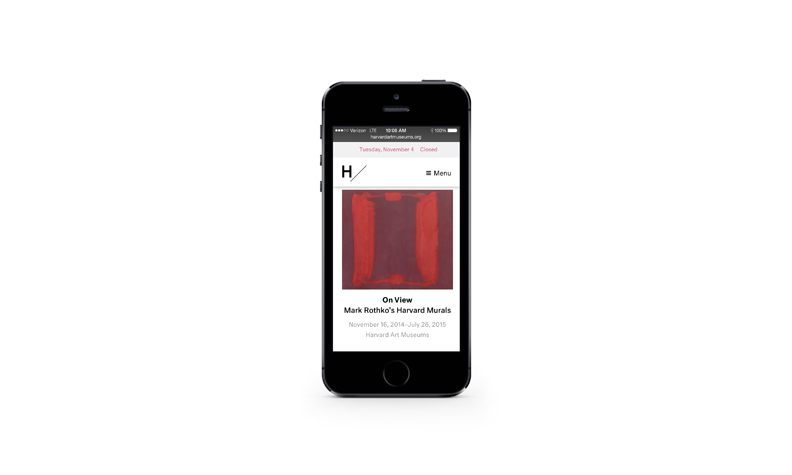The Harvard Art Museums are pleased to welcome you to our new and expanded website, with a fresh appearance and richer resources. It’s no coincidence that we’re launching the new site just as the museums are opening to the public; the site is intended to enhance the experience of visiting our 21st-century facility.
The redesign is the result of a collaboration between the museums’ Design and Digital Infrastructure and Emerging Technology departments and the interactive agency Area 17.
The website “is a valuable informational tool, whether you use it before, during, or after your visit,” said Steven Waldron, creative director for the Harvard Art Museums. “There are a lot of museum websites that you visit only to find out when the museum is open and how much admission costs. We wanted our website to offer more. It is intended to invite multiple, in-depth visits.”
The museums’ collections are at the core of the new design. A grid of large, high-resolution images of objects now appears on the homepage. Clicking on one takes you to an even larger image, which, in many cases, has zoom capability. If you’re in the gallery and see a work that piques your interest, you can type in the title, artist, gallery number, or keyword in the site’s search engine to be sent to its digital record, where you can read about the object’s conservation, exhibition history, and provenance.
Providing the opportunity for this sort of focused, in-depth investigation was a priority in the redesign, said Kemp Attwood, partner and executive creative director at Area 17. “We wanted people to feel immediately that they could access the museums’ collections, that they could put the art at their fingertips,” he said.
New and expanded interactive features help support our educational mission. Digital tours, which will soon be available, were developed by the Division of Academic and Public Programs; through text, image, and video, the tours offer insights into works on display in the galleries. Also, it is now possible to schedule an appointment online for the Art Study Center, where visitors can engage with original works of art not currently on view. This unique resource is open to all—scholars, faculty members, students, and members of the public.
The site lets users create their own collections that they can save or share. (Create an account by clicking on the link in the upper right-hand corner of the homepage.) And of course, the site was designed with social media integration in mind, making it easier to share images from our collections, events details, and even exhibition information.
There are new and improved functionality features as well. Interactive floor plans help visitors navigate the museums. Users can learn where works of art are simply by searching for them; individual digital records include gallery numbers (if the object is on display) and information about neighboring works. In addition, users who are unable to visit in person can access the museum shop online to purchase a keepsake, art book, or other item.
All of these features make the new harvardartmuseums.org a stronger, more dynamic resource. As Waldron said, “We wanted the new website to be a place for innovation, new ideas, and inspiration—just like the museums themselves.”
